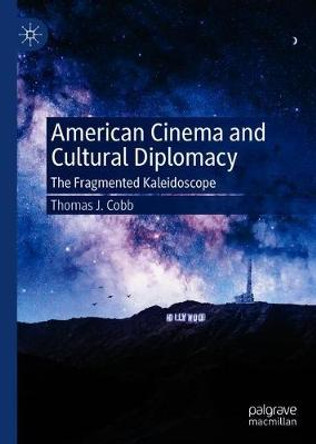Description
Cinema and the Cultural Cold War explores the ways in which postwar Asian cinema was shaped by transnational collaborations and competitions between newly independent and colonial states at the height of Cold War politics. Sangjoon Lee adopts a simultaneously global and regional approach when analyzing the region's film cultures and industries. New economic conditions in the Asian region and shared postwar experiences among the early cinema entrepreneurs were influenced by Cold War politics, US cultural diplomacy, and intensified cultural flows during the 1950s and 1960s. By taking a closer look at the cultural realities of this tumultuous period, Lee comprehensively reconstructs Asian film history in light of the international relationships forged, broken, and re-established as the influence of the non-aligned movement grew across the Cold War.
Lee elucidates how motion picture executives, creative personnel, policy makers, and intellectuals in East and Southeast Asia aspired to industrialize their Hollywood-inspired system in order to expand the market and raise the competitiveness of their cultural products. They did this by forming the Federation of Motion Picture Producers in Asia, co-hosting the Asian Film Festival, and co-producing films. Cinema and the Cultural Cold War demonstrates that the emergence of the first intensive postwar film producers' network in Asia was, in large part, the offspring of Cold War cultural politics and the product of American hegemony.
Film festivals that took place in cities as diverse as Tokyo, Singapore, Hong Kong, and Kuala Lumpur were annual showcases of cinematic talent as well as opportunities for the Central Intelligence Agency to establish and maintain cultural, political, and institutional linkages between the United States and Asia during the Cold War. Cinema and the Cultural Cold War reanimates this almost-forgotten history of cinema and the film industry in Asia.
About the Author
Sangjoon Lee is Assistant Professor at the Wee Kim Wee School of Communication and Information, Nanyang Technological University. He is editor of Rediscovering Korean Cinema.
Reviews
Cinema and the Cultural Cold War expertly utilizes rich archival material to tell a compelling story about cinema in Asia during the Cold War that describes the complexity of the film business and the myriad risks and failures. Read alongside other works such as Day and Liem (2010) and Shaw (2007), Lee's study is ground-breaking. It is a book for researchers and film historians, but also a highly readable story about the history of Cold War cinema.
* South East Asia Research *Sang Joon Lee's study is in concordance with his other books and will be highly useful for academics and researchers in the field of Asian cultural politics. Readers will benefit from Lee's deep knowledge of cross-cultural interchange through the Asian cinema network.
* Insight Turkey *Extensive archival research undergirds this first-rate analysis. The volume offers an excellent history of postwar Asian cinema in and of itself, but Lee's close analysis of the challenges of international coproduction and the development of a truly transnational Asian cinema in what he terms the First and Second Networks of Asian cinema elevates the volume and results in an original exploration of the relationship between cinematic production and the US's attempts to maintain dominance in the region. An important study.
* Choice *Book Information
ISBN 9781501753916
Author Sangjoon Lee
Format Paperback
Page Count 312
Imprint Cornell University Press
Publisher Cornell University Press
Weight(grams) 907g
Dimensions(mm) 229mm * 152mm * 21mm






